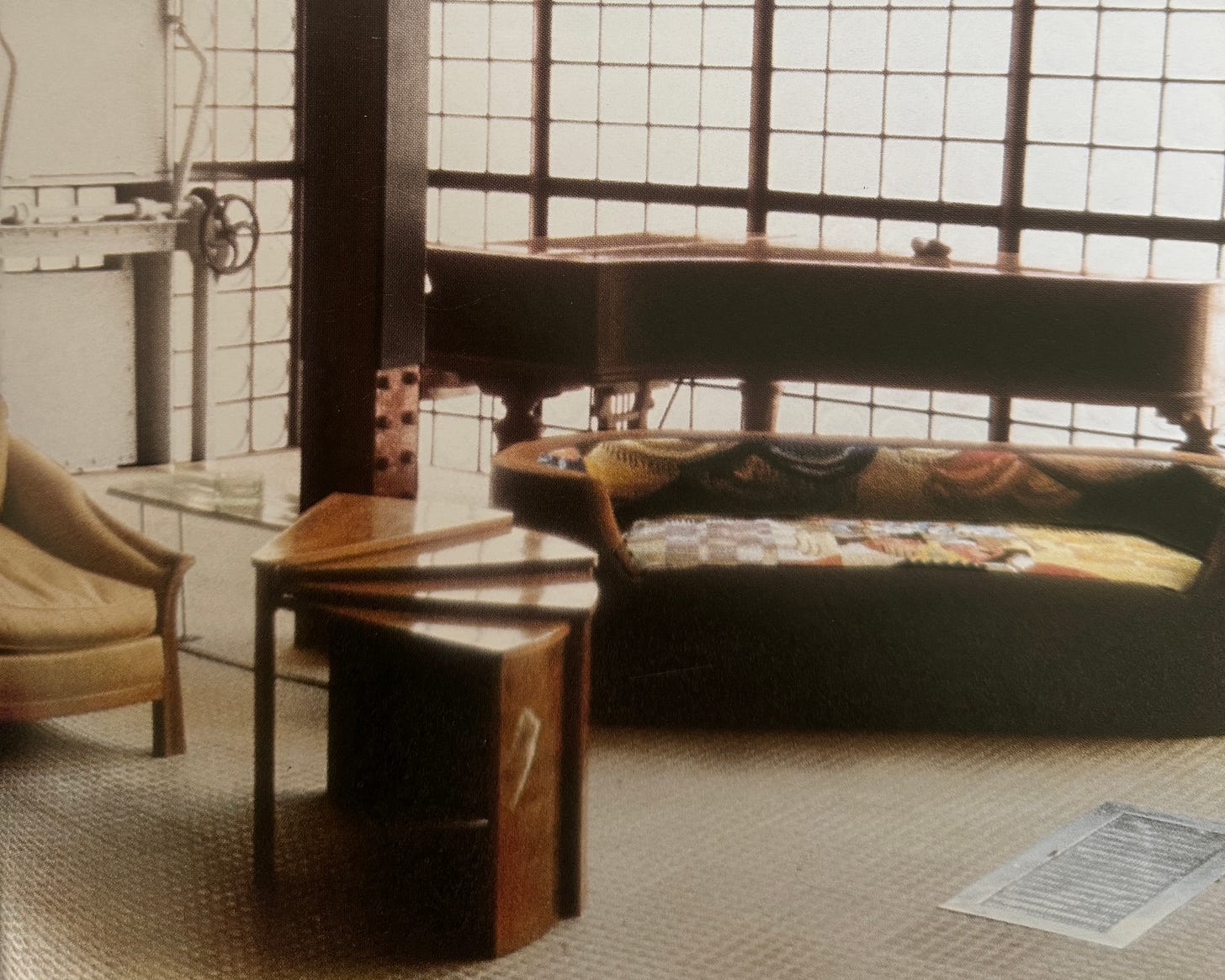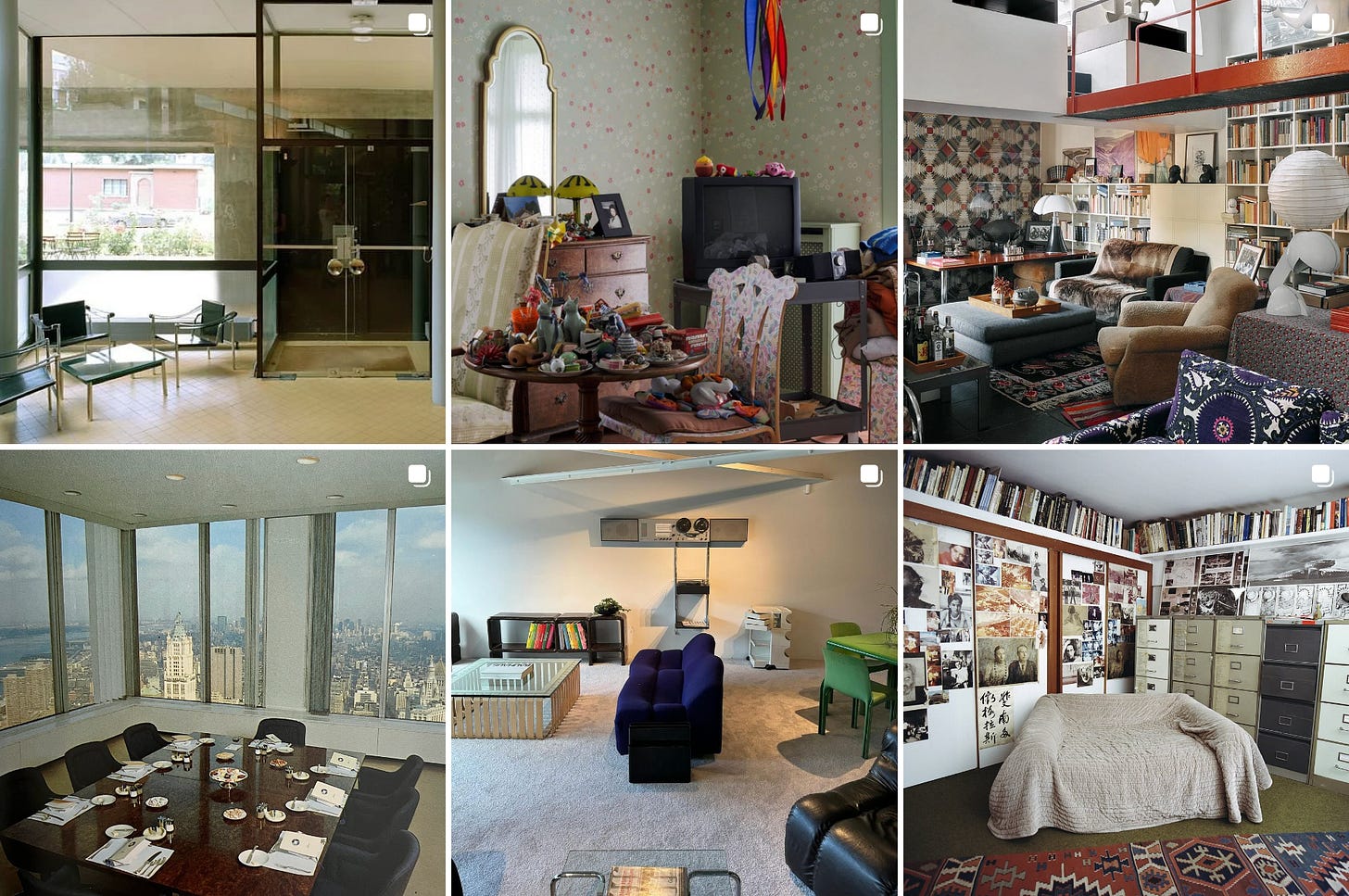On Design: Sourcing and Decision-Making
A Venn diagram on interior choices, design accounts to follow, and setting the mood for a new acquisition.
We made it! The first Outset Journal entry—thanks for being here. If you like what you read, go ahead and smash that subscribe button.
By nature of being an expat (Copenhagen via Vancouver) I’m always slightly untethered. My people and places are all over the map, both figuratively and literally. It also means the concept of ‘settling’ feels a bit abstract. So, I prefer to focus on inhabiting. I, like most spatially sensitive people, try to make wherever I am now feel good and right. A sense of home for me is as much tethered to my physical surroundings as it is to most other factors. As the old adage goes, home is where the stuff is.
The constant interior evolution of a space is both fun and daunting. Inhabiting fills spaces with need, and objects take on new meaning as they’re lived with. It’s with this process that I’ve developed the need for a new coffee table.
It will be the first substantial purchase I’ve made since the initial furnishing round when I moved in a year ago (knickknacks, objects, art, books, etc etc etc aside). This had me thinking less about the coffee table itself and more about the exercise/process of buying furniture. As you might know, I fill my days as Head of Marketing for furniture and home goods brand FRAMA, so I inevitably spend a lot of time thinking about how and why people buy furniture. It’s with this that I’m walking you through my thoughts on HOW TO BUY GREAT FURNITURE.
FOR YOUR CONSIDERATION: A DESIGN-ACQUISITION VENN DIAGRAM
Considering mine and most other spaces, I believe there to be three major deciding factors (pricepoint aside, despite, of course, being a major but less philosophically relevant one) when making a new design investment. The interplay of these three elements makes for a good or great purchase.
FORM: The physical shape but also feeling of a piece. What does the shape express? What structure and details does it reference? How does it relate to the interior language you’ve already created in your space?
MATERIAL: This refers not only to the piece's material itself (is it quality? Does it suit your palette and lifestyle?) but also to the other materials in a room. Finding a balance between them or intentionally doubling down on textures to create consistency.
FUNCTION: Serving practical needs of your own and those warranted by the space. Elements like size, surface, and the way you feel using it. Does it ‘work’?
***NOTE ON PRICE: Deciding on the above three factors is arguably more important. With the right amount of free time and commitment, you can always find a similar version of the style you’re after through secondhand mediums. Also, design pieces with a story or household name are a GOOD INVESTMENT. Resale is often at the same price you purchased (if buying secondhand) and easy to sell.
SOURCING 101
I like to approach digital sourcing in roughly the below order. We’ll save the IRL scavenging tips for another day. Let it be known that all these steps are, in my opinion, fun but by no means required. Go with your gut! Follow your heart!
1. Books: Secondhand architecture and interior books are probably the most inspiring medium. They set the mood for sourcing.
Some evidence from a recent trip to my own book stacks:



2. Instagram/Pinterest: Instagram and Pinterest allow you to hone your taste and bookmark pieces/spaces you find inspiring. Once you see a red thread start to emerge, you can dig deeper.
Some recommended starting points I often return to:




2.1. Google Image Search: Zoom in on the item you’ve set your sights on and reverse image search. Nine out of ten times, you’ll find what you were looking for and can either directly purchase it via one of the search results or proceed to step 4 or 5.
Searching for the above-cushioned stool in a Google image search turned up the exact stool in question from an auction site, as well as an onslaught of dupes from Amazon, Wayfair, and all the other usual suspects.
3. 1stDibs/Curated Secondhand: Sites that make it their business to have the best-ofs in curated interiors can be expensive but are specific and well-labelled. You can get a good sense of the era and designer quickly, then use that to develop a broader search for similar pieces. If you have the purchasing power, your search can easily end here with something outstanding.
Some starting points:
4. Online Auction Houses/Etsy/eBay/Local Resale (equivalent of Craigslist/DBA): Use the keywords found on curated vintage sites or reverse Google image search to scour for the same items in your local area or similar ones with lower price points. However, be aware the real bargain gems are often cast off by those who don’t label their listings with designer/year and require more engaged digging.
If you can’t find what you’re looking for immediately, set alerts for your chosen keywords and monitor your notifications. Also, pay attention to the ‘similar’ recommendations on these sites. You might find just what you didn’t know you were looking for.
While my ultimate motivation might be acquiring a new coffee table, this is also a general framework to make your own design discoveries—unprompted by a looming purchase. In the next installation of my search for a new surface, I’ll share what I’ve found along the way and how I’m weighing my options.
Until next time on The Outset,
Rhya







I love the beginning how you describe your thought process. Haha.
A really informative and useful piece. Thanks for sharing your insight.